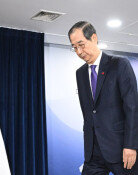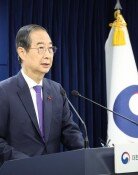Single-person households reach a record high at 34.5%
Single-person households reach a record high at 34.5%
Posted December. 13, 2023 10:14,
Updated December. 13, 2023 10:14
The proportion of single-person households in Korea has surged to 34.5%, reaching an all-time high. This increase is attributed to the rising number of young individuals living independently, as well as a growing population of older individuals choosing to live alone. Despite the substantial annual increase in the average income of single-person households, it remains lower than that of multi-person households. Additionally, these households face elevated housing, living expenses, and a burdensome debt load. Some argue that a revision of Korea's housing and welfare system is necessary, considering these individuals' specific characteristics and needs.
Last year, the number of single-person households in Korea reached 7.502 million, indicating a 1.1% increase year-over-year. Among men, the proportion of single-person households was highest, exceeding 40%, particularly among individuals under 39 and women over 60. The average annual income of a single-person household surpassed 30.1 million won last year, marking the first time it exceeded 30 million won. However, this amount is only 44.5% of the average income for all households. Simultaneously, debt levels are rising, with each single-person household reportedly owing an average of 28.47 million won.
Even though single-person households now constitute over one-third of the total, Korea's social and welfare system continues to be structured around households with multiple members. The government's housing supply policy emphasizes units of 84㎡, suited for three- or four-person households. However, the new supply of small houses under 60㎡, where more than 90% of single-person households reside, has decreased by 14% annually over the past six years. Moreover, the number of multi-family and officetel licenses this year has decreased by 60% year-over-year.
The scarcity of small housing units is poised to escalate the already elevated jeonse (long-term lease) and monthly rent prices, intensifying the financial strain on single-person households where housing costs constitute a significant portion of living expenses. Additionally, officetels, which are favored by young individuals, are excluded from the tax benefits offered for first-time home purchases. This further compounds the challenges faced by individuals seeking affordable housing options.
The current social welfare system is primarily tailored to accommodate multiple-member households. The national pension, for instance, offers additional pension amounts in the form of family allowances to recipients with dependents, such as spouses, minor children, and elderly parents. There is a pressing need for improvement since single-person households, which exhibit a significantly higher poverty rate, receive fewer benefits compared to households with multiple family members. In regions where numerous young and elderly single-person households reside, the crime rate is reported to be up to four times higher than in other areas. This underscores the necessity for more nuanced measures to prevent crime and various accidents, specifically targeting these households' unique challenges.
The proportion of single-person households is projected to reach nearly 40% by 2030. Living alone has become a prevalent lifestyle in Korea, highlighting the necessity to broaden the scope of the social system. The current system, originally designed for families where spouses, parents, and children reside together, needs readjustment to ensure that single-person households are not overlooked or disadvantaged.







